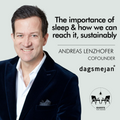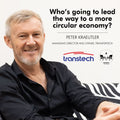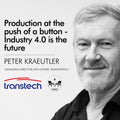A Definitive Guide To Sustainability
There is no denying that “Sustainability” is a hot topic. With consumers demanding transparency from brands, and the stark reality of the fashion industry becoming more and more apparent, sustainability is quite frankly the new leopard print when it comes to what is trending in the industry today. But with multiple brands, the media, and eco-warriors creating an overwhelming wave of information, it can become difficult to really know what sustainable fashion looks like.
From fast fashion, greenwashing, microplastics, all the way to fair trade, deadstock and minimalism, here is a definitive guide to every question you might have had about sustainable fashion.
What is Fast Fashion, and Why is it a Problem?
So much of the noise around the sustainability of the fashion industry relates to fast and slow fashion. Simply put, fast fashion is the crux of what is wrong with the industry and has become a leading factor in the deterioration of the environment.
Fast fashion refers to the mainstream fashion industry as we have known it today. Within this, high street fashion brands create copies of designs seen on the runway, at a far lower quality and less expensive price points. These replicas can be created in as short a time-span as 5 weeks, with the extreme case of some brands releasing at least 600 styles a week with a 48 hour turnover time from conception to shooting.
There are many layers to the impact of fast fashion: on the environment, on the workers, and on other - smaller - fashion brands.
The rapid rate at which these products are produced does not leave much time for consideration of the quality of the product, or the impact of its construction. Such products are made with very poor quality,synthetic materials that wear quickly. As the inherent purpose of such collections is to be mass-produced to meet constantly changing demands of the public, there is little-to-no thought or consideration for the longevity or disposal of the items once consumers inevitably become tired of them, or they fall apart due to their shoddy quality. The dyes and chemicals that are used in the construction of the fabrics and final products are often exceptionally toxic to waterways when washed, and release harmful toxins into the air when burnt. This means that their disposal becomes as damaging to the environment as their construction.This is not to mention the human element behind fast fashion.
"I MADE YOUR CLOTHES"
Photo by Synergy Clothing
Often, manufacturing facilities are overcrowded and unsafe, with workers experiencing harsh working conditions. The Rana Plaza disaster of 2013 was an event that shocked the world, forcing many to realize the truth behind their favorite brands. The campaign “Who Made My Clothes” was inspired by this tragedy, encouraging consumers to look further than the label and truly learn who was behind the clothes in their wardrobe. The campaign is a plea to consumers to have a more personal relationship with the clothes that they wear everyday, and to consider the human element behind every stitch.
Okay… Then What’s Slow Fashion? And How Do I Practice It In My Own Life?
By nature, slow fashion is the opposite of fast fashion. Instead of churning out new styles and products every month, if not weekly, slow fashion brands take their time. The business model of slow fashion brands is far more realistic. From sourcing, harvesting, and preparing the materials that will become the garments, all the way to the final stitch and quality check, this process can take weeks if not months, - especially with small business models that adhere to a more hand-made, artisan approach to their products.
Slow fashion extends past the manufacturing practices of new items, by promoting the purchase of second-hand and vintage clothing, and even making clothing yourself. Up-cycling items to give them a new lease on life has also become a popular way to promote a more sustainable approach to fashion.
By nature, slow fashion is the opposite of fast fashion. Instead of churning out new styles and products every month, if not weekly, slow fashion brands take their time. The business model of slow fashion brands is far more realistic. From sourcing, harvesting, and preparing the materials that will become the garments, all the way to the final stitch and quality check, this process can take weeks if not months, - especially with small business models that adhere to a more hand-made, artisan approach to their products.
Photo by Jean-Philippe Delberghe on Unsplash
Slow fashion extends past the manufacturing practices of new items, by promoting the purchase of second-hand and vintage clothing, and even making clothing yourself. Up-cycling items to give them a new lease on life has also become a popular way to promote a more sustainable approach to fashion.
At the root of it, ensuring that your items last by caring for them correctly and investing in high-quality products is the answer to a slow fashion approach.
At the root of it, ensuring that your items last by caring for them correctly and investing in high-quality products is the answer to a slow fashion approach.
Greenwashing - What Is It?
No, Greenwashing does not mean washing your clothing in eco-friendly detergent (although this is highly recommended to protect our water systems).
Greenwashing is defined as “Spending more time and money claiming to be “green” through advertising and marketing rather than actually implementing business practices that minimize environmental impact.”
It is easily identifiable when an aforementioned fast fashion brand starts releasing “eco-friendly” collections or claim to be “Conscious”.
The best way to avoid being caught in the web of a greenwashing spider is to do your research. If you can trace the efforts that the brand is making to change their own system and create a more sustainable future, you can probably trust them a little more. However, if the claims are superficial and you can’t actually find what the brand is doing to make a positive impact or reduce their own impact, then it’s, unfortunately, most likely that you’ve been tricked.
So why do brands claim to be green and eco friendly when they actually aren’t? Simply put, it’s because they know that they’re part of the problem and they’re trying to put a band-aid over the wound they’re contributing to. If they can be grouped under the brands that are trying to make an effort to create positive change, then hopefully they can get away with the realities of their manufacturing practices and impact. That being said, studies have shown that the younger generations are willing to spend more on products labeled as sustainable and eco friendly - so if they can raise their prices (even if it means lowering their morals), even better!
Terminology aside, let’s talk about the terms that we’ve seen popping up under the guise of sustainability.
Does “Organic” Matter?
Photo by Henry Be on Unsplash
“Organic” doesn’t necessarily mean that a product is environmentally conscious or environmentally friendly by any means. Organic simply refers to chemicals used in the growing and processing of a product. Therefore it alludes to a lack of synthetic pesticides or chemicals being used in the planting and growing of a harvest of raw materials, and only natural products being used to maintain crops.
While this term does prevent you from wearing or consuming any man-made chemicals or Genetically Modified goods, it does not necessarily mean that the product you have bought is actually good for the environment, or benefitting it in any way. The USDA Organic Certification does not control the impact that these products have on water consumption, the use of plastic or other non-recyclable materials, the consumption of fossil fuels, or the transportation surrounding the product. These are all factors that need to be considered when ensuring that a brand is sustainable.
What Is “Fair Trade”?
“Fair Trade is about better prices, improved and dignified working conditions, local sustainability, and fair terms of trade for farmers and workers in the developing world.”
Sustainability also considers the human element of the working environment and the practices used in manufacturing. Therefore Fair Trade plays a pivotal role in the bid towards a more sustainable industry. Not limited to that focus, Fair Trade also ensures that small-scale farming is encouraged, benefitting both the individual farmer while reducing the impact on the land. Fair Trade is, therefore, by nature, a sustainable pathway for farmers, suppliers, and businesses to take. By purchasing a “Fair Trade” option, you are making the conscious decision to support a more ethical and sustainable supply chain overall.
“Upcycling” vs “Recycling”
Upcycling is the practice of taking a product that you otherwise have no use for and repurposing it to extending its lifecycle. This is a practice that has become increasingly popular recently, with many designers reviving old items of clothing found in thrift stores. Upcycling can take the form of creating a new clothing item out of something old or repurposing the item of clothing into something entirely new, such as a decorative cushion or an apron.
Recycling, as a general definition, refers to converting waste into reusable material. This differs from upcycling largely on the basis that the original product is often broken down into a smaller form that is easier to reconstruct, as opposed to mostly being upgraded (as is the case with upcycling).
When it comes to clothing and textile recycling, this difference is easier to understand. Upcycled textiles are often cut, resewn, bedazzled, embroidered, and largely superficially modified. Recycled textiles on the other hand are quite literally broken down into their smallest form, often by shredding or deconstructing it down to the simple fibers - to be respun again into an entirely “new” textile. Oftentimes, the shredded scraps that cannot be reborn into new threads are still made useful by means of stuffing a mattress or filling the padding of cushioned furniture.
It is important, however, to recognize greenwashing when it comes to recycling clothing. Many brands have implemented clothing recycling bins in their stores with the promise that the donation of clothing made to their stores will become something entirely new - thereby easing the consumer guilt that shoppers might feel for supporting such labels. However, these promises may often be empty, misleading and superficial - as the clothes do not become something “new” but are in fact sent to other countries to be resold. And, with the unfortunate reality that many items are in no condition to be resold, these bins of donated clothing commonly arrive in landfills or amongst a heap of other textile waste being set alight. This further impacts the atmosphere and environment in adverse ways.
Ethical Fashion vs. Eco Fashion
Ethical Fashion refers to the treatment of the people within the manufacturing chain, their working conditions, how much they are paid, and their well-being. This also refers to the treatment of any animals that might provide raw materials for the products being made, as well as the use of animals in product testing.
Eco Fashion on the other hand ensures that the manufacturing practices do not negatively impact the immediate ecosystem, or the wider environment. This also includes the sustainable use of resources, as well as the longevity and manner of disposal of the products.
Deadstock - What Does That Mean and Is It So Great?
Deadstock fabric refers, in one case, to excess fabric that is left unused by a clothing manufacturer. By using excess fabric to create new products, manufacturers are actively avoiding this fabric turning up in a landfill, and therefore adding to the global concern of non-biodegradable waste matter. However, when using this excess fabric, manufacturers are contributing to a demand for fabric instead of allowing the excess to lead to an equilibrium that will hopefully balance out the supply and demand of textiles in a mass-producing industry
Photo by Mel Poole on Unsplash
Another form of deadstock is fabric that is damaged in some way or does not meet the standard of quality of the original manufacturer. This can therefore not be used by the original manufacturer, causing them to sell the fabric to another manufacturer who will be able to use it despite the damage or quality. While this also contributes to a reduced amount of waste in the industry, it does mean that the products made with this fabric will not be of good quality, will quickly deteriorate, and therefore form part of the unsustainable fast fashion life cycle.
And Microplastics?
Microplastics are minute pieces of plastic that come off our clothing when they are washed, or other products that have contact with the water cycle, and get swept into the waterways and into the ocean. This can include the microbeads found in beauty and health products - such as face washes and exfoliants. Considering that we are facing a global plastic pandemic, a conscious effort should be made to reduce, if not avoid, the use of plastic in our lives. Simply reaching for products without microbeads, or investing in a wash bag that can catch your microplastics when doing laundry, can make more difference than you might realize. Initiatives such as Humble Bee Ltd’s endeavors to create solutions to the plastics pollution are at the forefront of cutting edge textile technology.
Water-waste and Washing Practices
Water is essential to all life on earth. Many of us might underestimate how much water is used in production, or how badly the water can be affected and even damaged during and after product manufacturing.
In fact, around 79 billion cubic meters of water is used by the fashion industry per year, with a predicted 118 billion cubic meters expected by 2030. This includes the cultivation of the crops from which the fibers are sourced, the processing of raw materials, the washing and dying processes, as well as the subsequent cycles through washing machines after purchase. One of the most notably water heavy crops is cotton, with a significant 20,000 liters of water being used to produce 1kg of cotton. To put this into perspective, this is equivalent to just one t-shirt and pair of jeans. Thankfully, as strenuous as this is on the water usage of our globe, cotton is a durable textile that can withstand many years of use when cared for appropriately. So instead of swaying away from the classic cotton tee, in favor of something less draining of our water supplies, remember that investing in a high-quality pure cotton shirt, that will last you years, is always the better option.
On that note, did you know that jeans should not be washed after every wear?
Photo by Ricardo Gomez Angel on Unsplash
Originally created as manual labor attire, real denim jeans are made to last through many wears, grime and dirt, and be hardy enough to withstand above-average wear and tear. It’s recommended that you wash your jeans only every 3-10 wears, depending on the intensity and extent of activities when wearing them. This also means that investing in a high quality pair of denim jeans is really one of the most sustainable clothing choices you can make for your wardrobe. Not only will they last, but if you follow the right practices of wash and care, they are a water-usage friendly wardrobe item too.
When it comes to the chosen cleaning methods for your clothing, it is important to understand the impact that your detergent has on the waterways and the ocean - seeing as that is where the grey-water will end up. Reaching a non-toxic, natural laundry detergent and dishwashing liquid, enables you to put your environmentally conscious mind at ease, knowing that your load of laundry isn’t contributing to the degradation of the oceanic ecosystem!
While easily confusing and overwhelming, in a world of jargon and misleading information, sustainability is simple really. Act, consume, create responsibly, be conscious of your impact and role on the ecosystems around you, and be sincere in your intentions for change. Don’t get caught up in flashy green signs and the zeitgeist terminology of the sustainability phenomenon. It is simple, it is compassionate, and it’s in our very nature to care for the world around us, as long as we stay aware of the space we take up in being here. We are after all, guests to this planet.







